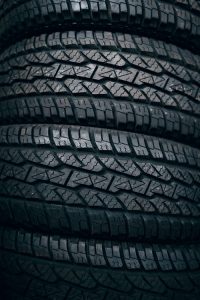Table of Contents
Introduction
You must have newly acquired an RC car, and you want to get the best out of it. However, you might be conflicted about what tire compound to use for your vehicle at an extreme level of heat—high temperature. We discuss this below.
What is an RC Car?
RC cars are miniature vehicles that are controlled by radio. These cars are usually operated from a distance using a radio and a transmitter that sits in the car to transmit the signals received into the desired output. To know more about an RC vehicle and how it works, visit How do RC cars work
What is a Tire?
Before we discuss and explain what tire compound to use for your clay tracks in extreme heat, let’s look into what some terms would enable us to grasp the subject. Tire
A tire is a component that is like a ring in shape and surrounds the rim of the wheel, and transfers the vehicle’s load.
Common tires used in automobiles, tricycles, and bicycles are pumped with pressurized air to increase it. These pneumatically inflated tires provide a means for shock absorption when the vehicle moves over rough paths.
Tires all have a contact patch, which comes in contact with the road’s rough surfaces or path. It is engineered to bear the vehicle’s weight to cause the road’s body to become deformed because of the car’s weight.
Tire Compound
A tire compound is a combination of different materials that go into the construction of it. These materials are used based on what duty the tire is to serve and what kind of track.
For a Truck supposed to carry heavy-duty loads, you would need the compounds that go into making the tire hard. It is because these trucks are expected to have more weight.
The tire’s compounds are usually soft- soft compounds for vehicles that are not expected or required to carry heavy loads.
The materials are used to make a tire vary based on different factors. The factors or purpose of a tire would determine what materials go into making it.
In a tire’s construction, a design is taken regardless of what purpose the tire is to serve, and we look at them below.
- Belts
All tires have a belt that is always considered for design when making a tire, regardless of purpose.
The belts help provide resistance against punctures that may occur when the tire is in use. It is usually coated in fiberglass, steel, and other materials and is located between the tread and the piles.
- Tire Tread
A tire’s tread is the rubber on its surface that makes contact with the road’s surface or path that the tire is used on. It is the pattern of grooves that is usually seen on the circumference of the tire. These gloves are done to allow water to pass from beneath the tires when used, and it is done to prevent hydroplaning from occurring.
In this case, where the tire is to be used in clay and extreme heat, a deeper pattern of gloves would be advisable to be used when making your tire.
- Tire Sipes
The tire siping is the thin slits on the circumference to improve the tire’s traction in wet and icy weather conditions.
- Tire Side Walls
The tire sidewall is the part that is usually seen from across a vehicle, this part is directing upon the circumference of the tire, and it helps in providing balance. Typically, a strong sidewall would result in a reliable and durable tire. Sidewalls are usually made very strong for Trucks that carry heavy-duty loads; this is because, if a soft sidewall is used, the tire will tear or break due to the load.
What is a Clay Track?
Let us look at what a clay track is, enabling you to understand what we are to do in-depth.
A track is a path that is used or followed by a car. In the context of the topic being discussed, a channel is a clear path of the road used for racing, using an RC car to race.
The effects that clay has on a track are diverse due to the properties of clay. The performance attributes of clay on a track help control the amount of slide on the track’s surface, the ability or tendency of the track surface to become rigid and compact in extreme heat. And the sensitivity of the path to little variation in moisture content.
We looked at the main parts of what makes a tire, its functions, what a clay track is, and why it is used. We delve into this article’s main focus: to know what tire compound to use on your clay track in extreme heat.
What Tire Compound Should You Use?
As was said earlier, the tire’s compound would depend on the tire’s purpose and what condition it to serve.
In this case, if you want to use the tire in a clay track in extreme heat or a high temperature, and you use an all-around kind of tire, you won’t get the most out of it.
One of the compounds that you shouldn’t make use of is synthetic rubber. Using rubber at a high temperature is not advisable because its use would reduce the tire’s traction; Synthetic rubber is to be used for low temperature.
Your tire’s sipes should be deep, which helps the tires maintain contact with the track surface. Another compound to make use of is steel. The steel should be used on the sidewalls as this would improve the overall performance.
Lastly, it would be best to use antiozonants, which would help prevent tire exposure’s adverse effects.
Conclusion
Now that you know what tire compound to use when making a tire for your RC car on a clay track in extreme heat. You can go ahead to use the information provided above to make a tire that would last and serve you well.

